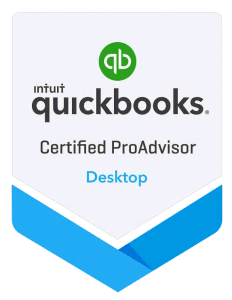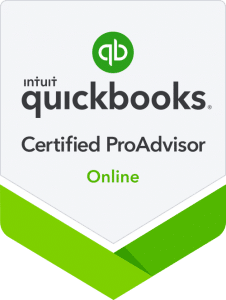Managing payroll isn’t just about cutting checks or calculating hours. It’s a complex task that ties directly into employee satisfaction, legal compliance, and your business’s financial health. If you’ve been handling payroll in-house or relying on disconnected tools and manual entry, things can quickly get messy. Mistakes happen, deadlines get missed, and it can start to interfere with the day-to-day work that actually grows your business.
That’s where full-service payroll can start to make sense. It takes the burden off your team by managing not just the paycheck side of things but also tax filings, direct deposits, and compliance tracking. But before jumping in, it’s important to figure out if it’s the right move right now. Let’s start by looking at how your current payroll system is really working for you.
Assessing Your Current Payroll System
Many small business owners don’t realize there’s a problem with their payroll process until it’s already causing issues. That might look like rushed paydays, penalties from late tax filings, or employees pointing out frequent errors in their paychecks. Sometimes the system looks okay on the surface, but behind the scenes, it’s sucking up time and allowing too much room for mistakes.
To figure out if your payroll system is holding you back, ask yourself a few simple questions:
– How long does it take to run payroll each pay period?
– Do you frequently double-check numbers by hand?
– Are pay stubs, tax forms, and records stored in different places?
– Have you ever missed a tax payment deadline or received a notice about incorrect filings?
– Is your payroll dependent on a single staff member who holds all the knowledge?
If you answered yes to any of these, your process may not be as solid as it needs to be.
Think about a business with five employees. At first, they used a spreadsheet to track hours and calculated everything manually. It worked for a bit. But as the team grew, so did the headaches. They started making errors, spending entire afternoons on payroll, and stressing about end-of-year tax forms. That’s when they knew it was time to change. Making payroll more efficient helped them stay focused on their goals instead of wasting energy on back-office work.
Sticking with a system that’s outdated or error-prone puts your team at risk of burnout and your business at risk of compliance problems. The good news is that there are better options out there, and full-service payroll can relieve a lot of this stress if your business is ready for the switch. But what do those benefits really look like when it’s done right?
Benefits Of Full-Service Payroll
Full-service payroll isn’t just about handing your numbers off to someone else. It’s about having a trusted system that handles everything from tracking pay to filing taxes correctly and on time. Everything works together, and that makes payroll not just simpler, but a lot more reliable.
Here’s what makes full-service payroll worth considering:
– Time-Saving: You’re no longer chasing timecards, entering numbers by hand, or trying to remember which form goes where. Those extra hours can go to managing your team or focusing on growth.
– Better Accuracy: Accurate paychecks mean fewer questions, less rework, and less frustration all around. It lowers the chance of making payroll mistakes that could lead to financial penalties.
– Compliance Support: With regulations changing often, it’s hard to keep up. Full-service solutions stay on top of rules around wage laws, taxes, and filings so you don’t have to.
– Stress Reduction: Knowing that payroll is handled gives you peace of mind. Your team gets paid, your taxes are filed, and you don’t wake up at night wondering if you missed a due date.
– Growth Flexibility: As your business scales, your payroll needs will grow too. Having a system in place that can grow with you saves you the trouble of building a new one from scratch later.
With all of that streamlined, managing a team becomes less about keeping up with paperwork and more about real leadership. Every business has different needs, but a full-service model can meet those needs better than piecing the process together on your own. Before jumping in, though, it’s worth taking a closer look at whether your business is truly ready for full-service payroll.
Determining If Your Business Is Ready
Deciding if your business is ready for full-service payroll depends on various factors. Start by assessing your business size and complexity. Larger teams often find that manual or in-house systems can’t keep up with the pace, leading to delays and errors. Smaller businesses might still benefit if payroll takes up valuable time better spent elsewhere.
The next step is understanding your compliance needs. Different states have different wage laws, tax rates, and filing requirements. Keeping up with these changes can be overwhelming. A full-service payroll can ensure that you’re always in line with the rules, reducing the risk of penalties.
Ask yourself these questions to gauge readiness:
– Have you experienced frequent payroll errors?
– Are compliance requirements becoming hard to manage?
– Is payroll processing taking too much time each month?
– Has your business recently grown or shifted practices?
Consider a coffee shop that started small, with just a few employees. Tracking hours was simple, but as business picked up and they hired more staff, it became hard to manage payroll manually. The endless paperwork and constant updates to labor laws made them realize it was time for a change. Switching to full-service payroll not only saved them time but also eliminated the constant worry about compliance.
How to Transition to Full-Service Payroll
Once you’ve decided to move forward, transitioning to full-service payroll involves several steps. First, research and choose a reliable payroll provider that suits your business needs. Look for features that align with your goals, such as direct deposit, mobile access, and integration with your existing systems.
Here’s a simple plan to make the switch:
1. Research Providers: Compare features, pricing, and customer reviews to find the right match.
2. Prepare Your Data: Gather employee details, tax forms, and any existing payroll records for a smooth transition.
3. Schedule a Demo: Test out the platform to ensure it meets your expectations and understand how it can streamline your processes.
4. Implement the System: Work closely with the provider to set up the system and train your team.
5. Monitor Progress: As you roll out the new system, keep an eye on its performance. Make adjustments as needed to fit your operational style.
Choosing the right provider can make all the difference. It not only meets your current needs but also supports growth and adapts to changes in the business landscape.
Making Payroll Stress-Free for Your Business
Switching to full-service payroll can transform how you handle payroll tasks. It means less time spent on tedious processes and more energy to focus on strategic growth. Efficiency and peace of mind are within reach when you find the system that fits your operation perfectly.
Evaluate your current payroll process honestly and see if it’s time for an upgrade. You’ll find that freeing up time and reducing errors will have a positive impact on both employee satisfaction and your bottom line. Taking these steps could be just what your business needs to thrive.
FAQs
1. How can full-service payroll save my business time?
By automating repetitive tasks like calculations and tax filings, full-service payroll frees up hours each pay period that can be used to focus on growth and employee management.
2. What should I look for when choosing a payroll provider?
Ensure the provider offers features like direct deposit, compliance updates, easy reporting, and integration with your current tools. Checking reviews and ratings can also help in making a decision.
3. Can full-service payroll help with compliance issues?
Yes, it can keep track of changing tax laws and labor regulations, ensuring you’re always in compliance and reducing the risk of costly penalties.
4. How do I know if my business needs full-service payroll?
If you’re regularly facing payroll errors or spending too much time managing it, or if compliance is becoming a challenge, it might be time to consider full-service options.
Switching to a solution that fits your needs can significantly cut down on the time and stress involved with managing payroll, allowing you to focus on what truly matters—growing your business. If you’re looking for a more reliable way to handle paychecks, taxes, and compliance, explore our payroll services in San Antonio at Cloud Bookkeeping. We offer a streamlined approach backed by local expertise and tailored support to help your business stay on track.






